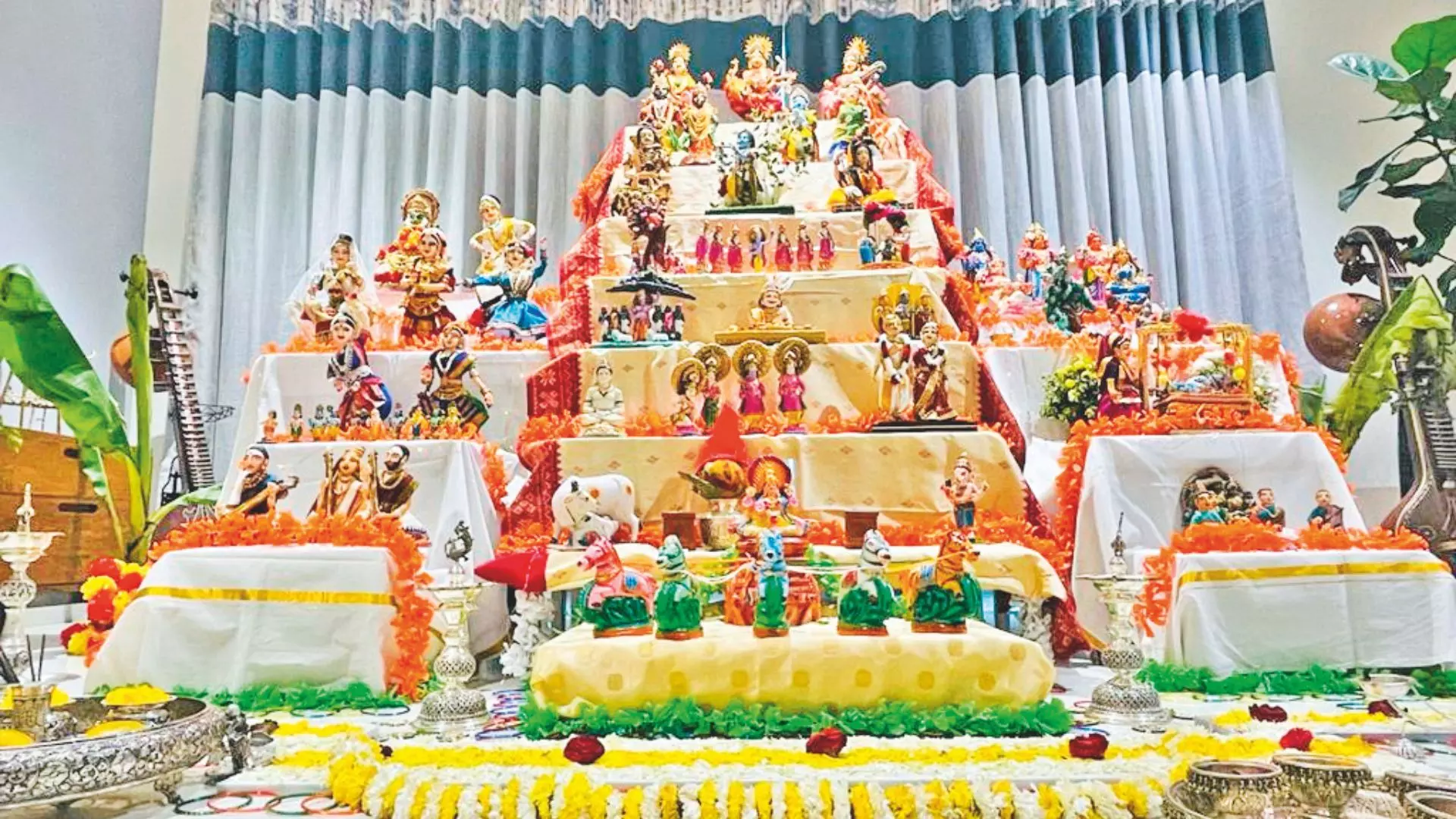The Tradition of Storytelling

‘A sense of fulfillment’
As I prepare my Bommala Koluvu each year, I am enveloped in a sense of divine presence and spiritual fulfillment. This cherished tradition is a source of endless inspiration, where each doll and deity symbolizes a new chapter of blessings and grace. The festival breathes new life into my home, reminding me of the eternal cycle of renewal and the sacred bond I share with the divine. — SUCHITRA ELLA, Managing Director, Bharat Biotech.
‘Legacy from both sides of the family’
My mother used to set up the Golu at her home, and after I had my daughter, I took over the tradition. Each year during Dusshera, I host the Golu, inviting family and friends for a tambulam. Even when I’ve been away from home, I’ve always made sure to display a few bommalu to keep the tradition alive. My mother-in-law also maintained a Bommala Koluvu till she became an empty nester in Kakinada. After returning from the US, I continued the practice at our home in Hyderabad, carrying on the legacy from both sides of the family.
During the COVID lockdown, my mother-in-law began experimenting with clay, starting with small dolls and hand-stitched clothes. I helped by sourcing the materials she needed. As her confidence grew, she took on larger projects, creating mythological figures, many of which I had requested to enhance our Golu display. She even started crafting intricate figures from shells, incorporating a unique touch into her creations.
Now, our Golu proudly showcases many of her handmade dolls, which I treasure and carefully preserve as a beautiful part of our family’s cherished tradition. — NIRUPAMA ATHMAKURI, Director, Lemongrass India Pvt Ltd , and PUSHPAVATHI, Vocal and Veena Artiste
‘Steps represent evolution of beings’
I completed my education in Chennai where I saw Golu decorations in my friends’ homes. Some families have passed down dolls from generation to generation. There is always a narrative behind them, such as how and when they purchased them. Golu Padi (Golu steps) is divided into five or nine steps, each representing a stage of life, from animals to people, Rishis, and Dasavathara, with the topmost steps always depicting goddess Durga, Shiva, Vishnu and Laxmi. The steps are said to represent the evolution of beings from the 'lower' animal lives to divine. — SAHITYA KOTIMREDDY, homemaker

